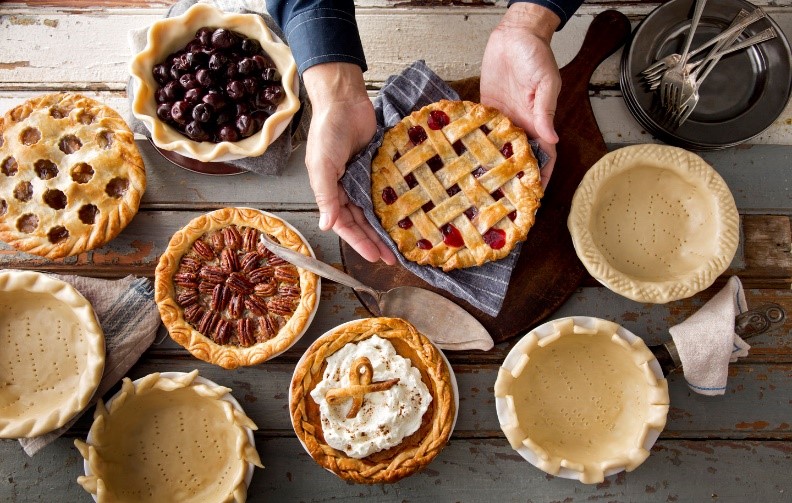What happens when pastry meets filling…. A beautiful pie. The history of pies goes all the way back to the ancient Greeks. It is believed that they were the first ones to come up with the pie pastry. Even the Romans used many meat items to create savory versions of these delicious pies. The version Americans and people world-wide gorge on during thanksgiving have been recently developed.

Originally in medieval England, they were called pyes and were usually filled with meat-— beef, lamb, wild duck, magpie pigeon — spiced with pepper, currants or dates instead of being predominantly sweet. Usually pies were made by the Pilgrims as a means to preserve food, and were often used to keep the filling fresh during the winter months. The crust of the pie was referred to as “coffyn” and was more in quantity than the filing.

Pies usually are defined and differentiated by their crusts. A filled pie has pastry lining the baking dish, and the filling is placed on top of the pastry but left open. A top-crust pie has the filling in the bottom of the dish and is covered with a pastry or other covering before baking. A two-crust pie has the filling completely enclosed in the pastry shell. Shortcrust pastry is a typical kind of pastry used for pie crusts, but many things can be used, including baking powder biscuits, mashed potatoes, and crumbs.

The biggest dilemma people face now are to differentiate between a pie, tart and a quiche. After a bit of research, we can actually differentiate them on the basis on 4 elements.
| Dish | Depth | Crust | Serving Temperature | Filler |
| Quiche | Shallow | Single – Bottom only | Warm | Custard Topping (Egg and cream) |
| Tart | Shallow | Single – Bottom only | Cold/Room temp | May have custard based filling, not always |
| Pie | Deep | Double – Top & Bottom | Hot/Warm | No custard based filling |
So as you can see, any way you slice it, the simple pie actually has a long and interesting history.
